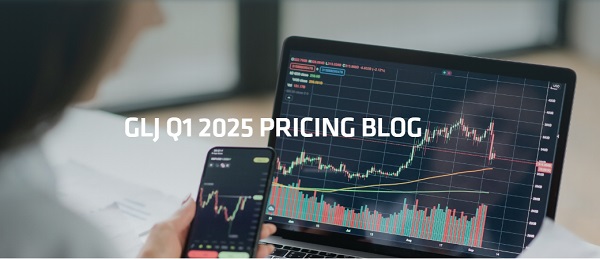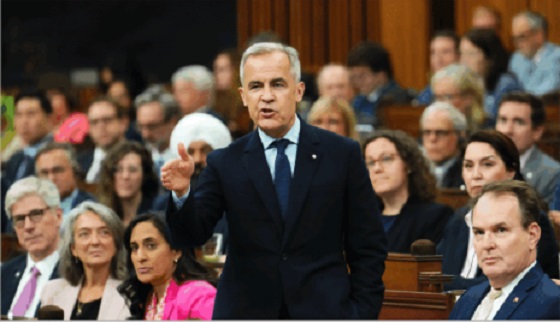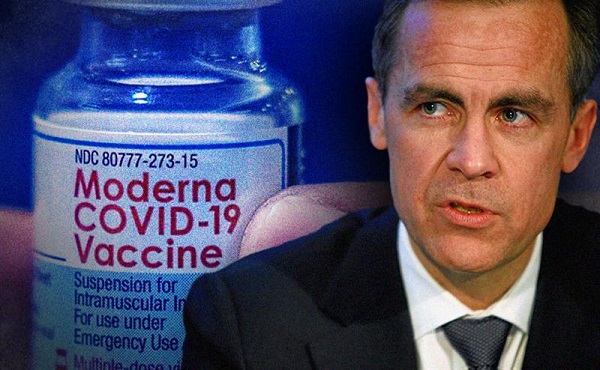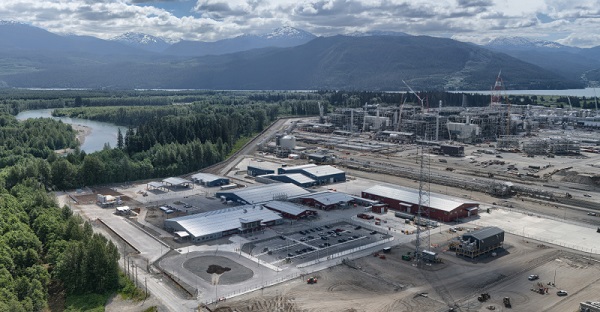Business
2025 Energy Outlook: Steering Through Recovery and Policy Shifts

From EnergyNow.ca
By Leonard Herchen & Yuchen Wang of GLJ
Their long-term real price forecast projects WTI at USD $74.00 per barrel and Henry Hub natural gas at USD $4.00 per MMBtu in 2025 dollars, signaling expectations of market stabilization and sustained global demand.
The energy markets in 2025 are undergoing transformative structural changes, highlighted by the operational launch of key infrastructure projects such as LNG Canada. This development significantly enhances Canada’s ability to meet rising global LNG demand while alleviating long-standing supply bottlenecks. At the same time, economic recovery across major markets remains uneven, shaping varied trends in energy demand and production activity.
Geopolitical dynamics are poised to redefine the competitive landscape, with the return of a Trump-led U.S. administration introducing potential shifts in trade policies, regulatory frameworks, and relationships with leading energy-producing nations. These changes, coupled with climate policy advancements and an accelerated global transition toward renewable energy, present additional complexities for the oil and gas sector.
Amid these uncertainties, GLJ’s analysts express confidence in the resilience of market fundamentals. Their long-term real price forecast projects WTI at USD $74.00 per barrel and Henry Hub natural gas at USD $4.00 per MMBtu in 2025 dollars, signaling expectations of market stabilization and sustained global demand.
Oil Prices
The oil market in 2025 reflects a delicate balance between supply and demand. During Q4 2024, WTI prices remained stable, fluctuating between $69 and $73 per barrel. This stability highlights the market’s resilience, even in the face of a slower global economic recovery and geopolitical challenges, including weaker demand in regions like China and increased production in North America.
Geopolitical risks remain pivotal, with ongoing tensions in the Middle East and sanctions on oil-exporting nations such as Iran and Venezuela threatening supply disruptions. While OPEC+ production cuts continue to provide vital support to prices by tightening global supply, these efforts are partially offset by the rising output of non-OPEC producers, notably in the U.S. and Canada.
The Trans Mountain Expansion (TMX) project is reshaping the pricing dynamics of WCS crude relative to WTI. By increasing export capacity to the West Coast, TMX has created conditions for a sustained narrowing of the WCS-WTI differential, moving away from seasonal fluctuations.
The return of a Trump-led U.S. administration introduces additional challenges. Deregulation policies aimed at boosting domestic oil production may exert downward pressure on prices, while potential trade tariffs and revised international agreements could further complicate global oil flows.
In this dynamic environment, GLJ forecasts WTI to average $71.25 per barrel and Brent $75.25 per barrel in 2025. These projections reflect robust long-term fundamentals, including sustained global demand and ongoing efforts to manage supply dynamics, emphasizing the market’s resilience despite near-term uncertainties.
Natural Gas Prices
In 2025, GLJ’s forecast suggests Henry Hub prices will average $3.20 per MMBtu, supported by steady domestic demand, seasonal winter peaks, and robust LNG exports. U.S. natural gas continues to play a critical role globally, ensuring supply security for key markets in Europe and Asia. The combination of growing industrial use, power generation demand, and stable production levels provides a solid foundation for price stability.
For the Canadian market, GLJ projects AECO natural gas prices to average $2.05 per MMBtu in 2025, representing a recovery from the lows of 2024. This improvement is attributed to easing regional oversupply and stabilizing demand. However, challenges persist, as production continues to outpace infrastructure expansion, prompting a downward adjustment of GLJ’s long-term AECO price forecast by $0.40 per MMBtu. The ramp-up of LNG Canada’s operations is expected to progressively enhance market dynamics and address these challenges.
On a global scale, LNG benchmarks such as NBP, TTF, and JKM have remained relatively stable, supported by high storage levels in Europe and balanced supply-demand conditions. European suppliers have effectively managed storage drawdowns, ensuring sufficient reserves for winter. Nevertheless, these benchmarks remain susceptible to market volatility driven by geopolitical uncertainties.
The CAD/USD Exchange Rate
The Canadian dollar experienced sharp depreciation during the last quarter of 2024, with the CAD/USD exchange rate falling below 0.70 USD. Economists have attributed this decline to the strength of the U.S. economy and its currency, the widening gap between the Bank of Canada and the U.S. Federal Reserve’s lending rates, as well as tariff threats and a political crisis in Ottawa. These factors have created a favorable environment for the U.S. dollar, putting downward pressure on the Canadian dollar.
Looking ahead to 2025, GLJ forecasts a CAD/USD exchange rate averaging 0.705 USD, underpinned by steady oil and gas revenues and enhanced export capacity from major projects such as LNG Canada and the TMX and eventual resolution of internal political issues and return to normalcy in US tariff policy.
Nevertheless, the outlook for the Canadian dollar remains uncertain, shaped by global economic recovery—particularly in China—and U.S. policy decisions under the Trump administration. While near-term challenges persist, Canada’s resource-driven economy and strategic energy export position provide a degree of resilience. In the absence of significant economic or geopolitical disruptions, GLJ projects the CAD/USD exchange rate to stabilize around 0.75 USD over the long term.
In 2025, GLJ expanded its database to include forecasts for Colombia Vasconia and Castilla Crude, as well as lithium prices, reflecting the increasing focus on diverse energy and resource markets. The addition of lithium forecasts aligns with the growing global emphasis on energy transition minerals critical for electric vehicles and battery storage solutions. A separate blog, set to be published next week on the GLJ website, will explore the lithium price forecast in greater depth, offering a detailed analysis and strategic implications for the energy sector.
GLJ’s forecast values for key benchmarks is as follows:

Business
Mark Carney’s Fiscal Fantasy Will Bankrupt Canada

By Gwyn Morgan
Mark Carney was supposed to be the adult in the room. After nearly a decade of runaway spending under Justin Trudeau, the former central banker was presented to Canadians as a steady hand – someone who could responsibly manage the economy and restore fiscal discipline.
Instead, Carney has taken Trudeau’s recklessness and dialled it up. His government’s recently released spending plan shows an increase of 8.5 percent this fiscal year to $437.8 billion. Add in “non-budgetary spending” such as EI payouts, plus at least $49 billion just to service the burgeoning national debt and total spending in Carney’s first year in office will hit $554.5 billion.
Even if tax revenues were to remain level with last year – and they almost certainly won’t given the tariff wars ravaging Canadian industry – we are hurtling toward a deficit that could easily exceed 3 percent of GDP, and thus dwarf our meagre annual economic growth. It will only get worse. The Parliamentary Budget Officer estimates debt interest alone will consume $70 billion annually by 2029. Fitch Ratings recently warned of Canada’s “rapid and steep fiscal deterioration”, noting that if the Liberal program is implemented total federal, provincial and local debt would rise to 90 percent of GDP.
This was already a fiscal powder keg. But then Carney casually tossed in a lit match. At June’s NATO summit, he pledged to raise defence spending to 2 percent of GDP this fiscal year – to roughly $62 billion. Days later, he stunned even his own caucus by promising to match NATO’s new 5 percent target. If he and his Liberal colleagues follow through, Canada’s defence spending will balloon to the current annual equivalent of $155 billion per year. There is no plan to pay for this. It will all go on the national credit card.
This is not “responsible government.” It is economic madness.
And it’s happening amid broader economic decline. Business investment per worker – a key driver of productivity and living standards – has been shrinking since 2015. The C.D. Howe Institute warns that Canadian workers are increasingly “underequipped compared to their peers abroad,” making us less competitive and less prosperous.
The problem isn’t a lack of money; it’s a lack of discipline and vision. We’ve created a business climate that punishes investment: high taxes, sluggish regulatory processes, and politically motivated uncertainty. Carney has done nothing to reverse this. If anything, he’s making the situation worse.
Recall the 2008 global financial meltdown. Carney loves to highlight his role as Bank of Canada Governor during that time but the true credit for steering the country through the crisis belongs to then-prime minister Stephen Harper and his finance minister, Jim Flaherty. Facing the pressures of a minority Parliament, they made the tough decisions that safeguarded Canada’s fiscal foundation. Their disciplined governance is something Carney would do well to emulate.
Instead, he’s tearing down that legacy. His recent $4.3 billion aid pledge to Ukraine, made without parliamentary approval, exemplifies his careless approach. And his self-proclaimed image as the experienced technocrat who could go eyeball-to-eyeball against Trump is starting to crack. Instead of respecting Carney, Trump is almost toying with him, announcing in June, for example that the U.S. would pull out of the much-ballyhooed bilateral trade talks launched at the G7 Summit less than two weeks earlier.
Ordinary Canadians will foot the bill for Carney’s fiscal mess. The dollar has weakened. Young Canadians – already priced out of the housing market – will inherit a mountain of debt. This is not stewardship. It’s generational theft.
Some still believe Carney will pivot – that he will eventually govern sensibly. But nothing in his actions supports that hope. A leader serious about economic renewal would cancel wasteful Trudeau-era programs, streamline approvals for energy and resource projects, and offer incentives for capital investment. Instead, we’re getting more borrowing and ideological showmanship.
It’s no longer credible to say Carney is better than Trudeau. He’s worse. Trudeau at least pretended deficits were temporary. Carney has made them permanent – and more dangerous.
This is a betrayal of the fiscal stability Canadians were promised. If we care about our credit rating, our standard of living, or the future we are leaving our children, we must change course.
That begins by removing a government unwilling – or unable – to do the job.
Canada once set an economic example for others. Those days are gone. The warning signs – soaring debt, declining productivity, and diminished global standing – are everywhere. Carney’s defenders may still hope he can grow into the job. Canada cannot afford to wait and find out.
The original, full-length version of this article was recently published in C2C Journal.
Gwyn Morgan is a retired business leader who was a director of five global corporations.
Business
Carney Liberals quietly award Pfizer, Moderna nearly $400 million for new COVID shot contracts

From LifeSiteNews
Carney’s Liberal government signed nearly $400 million in contracts with Pfizer and Moderna for COVID shots, despite halted booster programs and ongoing delays in compensating Canadians for jab injuries.
Prime Minister Mark Carney has awarded Pfizer and Moderna nearly $400 million in new COVID shot contracts.
On June 30th, the Liberal government quietly signed nearly $400 million contracts with vaccine companies Pfizer and Moderna for COVID jabs, despite thousands of Canadians waiting to receive compensation for COVID shot injuries.
The contracts, published on the Government of Canada website, run from June 30, 2025, until March 31, 2026. Under the contracts, taxpayers must pay $199,907,418.00 to both companies for their COVID shots.
Notably, there have been no press releases regarding the contracts on the Government of Canada website nor from Carney’s official office.
Additionally, the contracts were signed after most Canadians provinces halted their COVID booster shot programs. At the same time, many Canadians are still waiting to receive compensation from COVID shot injuries.
Canada’s Vaccine Injury Support Program (VISP) was launched in December 2020 after the Canadian government gave vaccine makers a shield from liability regarding COVID-19 jab-related injuries.
There has been a total of 3,317 claims received, of which only 234 have received payments. In December, the Canadian Department of Health warned that COVID shot injury payouts will exceed the $75 million budget.
The December memo is the last public update that Canadians have received regarding the cost of the program. However, private investigations have revealed that much of the funding is going in the pockets of administrators, not injured Canadians.
A July report by Global News discovered that Oxaro Inc., the consulting company overseeing the VISP, has received $50.6 million. Of that fund, $33.7 million has been spent on administrative costs, compared to only $16.9 million going to vaccine injured Canadians.
Furthermore, the claims do not represent the total number of Canadians injured by the allegedly “safe and effective” COVID shots, as inside memos have revealed that the Public Health Agency of Canada (PHAC) officials neglected to report all adverse effects from COVID jabs and even went as far as telling staff not to report all events.
The PHAC’s downplaying of jab injuries is of little surprise to Canadians, as a 2023 secret memo revealed that the federal government purposefully hid adverse effect so as not to alarm Canadians.
The secret memo from former Prime Minister Justin Trudeau’s Privy Council Office noted that COVID jab injuries and even deaths “have the potential to shake public confidence.”
“Adverse effects following immunization, news reports and the government’s response to them have the potential to shake public confidence in the COVID-19 vaccination rollout,” read a part of the memo titled “Testing Behaviourally Informed Messaging in Response to Severe Adverse Events Following Immunization.”
Instead of alerting the public, the secret memo suggested developing “winning communication strategies” to ensure the public did not lose confidence in the experimental injections.
Since the start of the COVID crisis, official data shows that the virus has been listed as the cause of death for less than 20 children in Canada under age 15. This is out of six million children in the age group.
The COVID jabs approved in Canada have also been associated with severe side effects, such as blood clots, rashes, miscarriages, and even heart attacks in young, healthy men.
Additionally, a recent study done by researchers with Canada-based Correlation Research in the Public Interest showed that 17 countries have found a “definite causal link” between peaks in all-cause mortality and the fast rollouts of the COVID shots, as well as boosters.
Interestingly, while the Department of Health has spent $16 million on injury payouts, the Liberal government spent $54 million COVID propaganda promoting the shot to young Canadians.
The Public Health Agency of Canada especially targeted young Canadians ages 18-24 because they “may play down the seriousness of the situation.”
-

 Fraser Institute2 days ago
Fraser Institute2 days agoBefore Trudeau average annual immigration was 617,800. Under Trudeau number skyrocketted to 1.4 million annually
-

 MAiD2 days ago
MAiD2 days agoCanada’s euthanasia regime is already killing the disabled. It’s about to get worse
-

 Frontier Centre for Public Policy2 days ago
Frontier Centre for Public Policy2 days agoNew Book Warns The Decline In Marriage Comes At A High Cost
-

 Business2 days ago
Business2 days agoPrime minister can make good on campaign promise by reforming Canada Health Act
-

 Addictions1 day ago
Addictions1 day ago‘Over and over until they die’: Drug crisis pushes first responders to the brink
-

 International2 days ago
International2 days agoChicago suburb purchases childhood home of Pope Leo XIV
-

 Daily Caller1 day ago
Daily Caller1 day agoUSAID Quietly Sent Thousands Of Viruses To Chinese Military-Linked Biolab
-

 Energy2 days ago
Energy2 days agoLNG Export Marks Beginning Of Canadian Energy Independence


